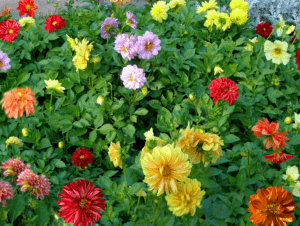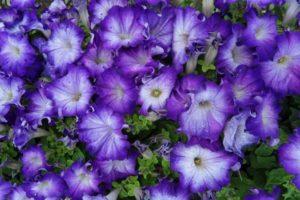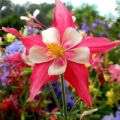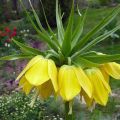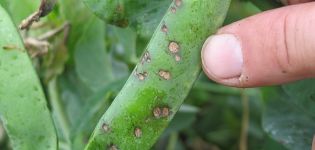Rules for planting and caring for periwinkle in the open field
Periwinkle, belonging to the Kutrovy family, is an evergreen perennial plant. The shrub is famous for its unpretentiousness to living conditions, therefore it has long been a symbol of vitality. Thanks to this feature, many magical legends are dedicated to the flower: it was believed that the twigs of a plant are able to identify and expel evil spirits. How to properly plant and care for periwinkle in the open field, so that the plant becomes the highlight of the garden?
General characteristics of the flower
Periwinkle is a shrub or semi-shrub with creeping or vertical shoots. The surface of the oval leaves is glossy, the color is deep green. Certain types of leaf plates are edged or covered with light beige spots. Single funnel-shaped flowers are colored lilac, pink or white.
The effectiveness of the plant lies in the structure: bright flowers form at the end of vertically directed long peduncles. Flowering, which begins in spring, is extended, long-lasting. In place of withered flowers, fruits are formed - a pair of cylindrical plates attached to each other.
Types and varieties
Biologists know about ten species of periwinkle, but only three of them have gained popularity among gardeners. Given the large number of varieties, this is quite enough for everyone to choose a flower according to their taste and growing conditions.
Periwinkle large
View with horizontally creeping and vertical shoots. The leaf plates are ovoid, large. The length of the leaf is often 9 centimeters. The blue or blue flower is divided into 5 petals, the transverse diameter of which is 5 centimeters. Depending on the place of growth, the leaf plates and flowers of the large species are narrow, and the shoots are pubescent.
Flowers are covered in May-June. The plant has good winter hardiness, but in those parts of the country where winter is not abundant in snow, periwinkle cannot do without a layer of insulation.

Periwinkle pink
Pink catharanthus or Madagascar periwinkle is a 50 centimeter high shrub that arrived in our area from the island of Java. The shiny surface of oval leaves is divided in the middle by a thick vein. Consisting of 5 petals, large flowers are placed at the end of thin green shoots.Duration of flowering of pink periwinkle - 10 months.
Periwinkle
A groundcover flower with 60 cm curly shoots. The diameter of the leaves is 3-5 centimeters. On 20-centimeter peduncles, flowers are formed that resemble funnels with a diameter of 2.5 centimeters. The small species blooms in May or June. The duration of the period is 30 days.
Periwinkle herbaceous
Flower with creeping shoots covered with glossy elliptical foliage. Placed on a 15-centimeter peduncle, single flowers are painted in blue-purple color. Flowering begins in late May and lasts 27-30 days. The herbaceous variety is endowed with resistance to low temperatures, however, in regions with little snowy winters, it is better to cover the shoots with spruce branches.
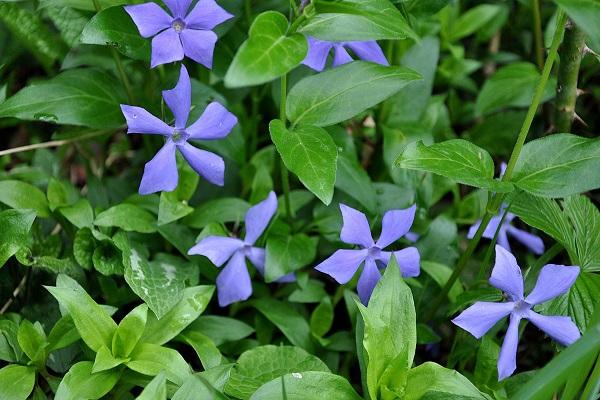
Periwinkle ampelous
A perennial species intended for indoor cultivation. The height of the plant does not exceed 20, and the diameter of the flower is 4-5 centimeters. The ampelous variety is grown in the apartment and in the garden.
Periwinkle Kiffa
A flower that was specially bred by experts for cultivation at home. During the flowering period, the Kiffa variety is strewn with large flowers of bright pink color. It is rare to see a variety with burgundy flowers.
Periwinkle Variegata
Variegated perennial with creeping branches up to 80 centimeters long. Plant height - 30-40 centimeters. Variegatous has thick, smooth-skinned, dark green leaves that border wide stripes. Violet-blue funnel-shaped flowers up to 4 centimeters in diameter. Frost resistance of the Variegata variety is high. Bloom lasts from May to June.
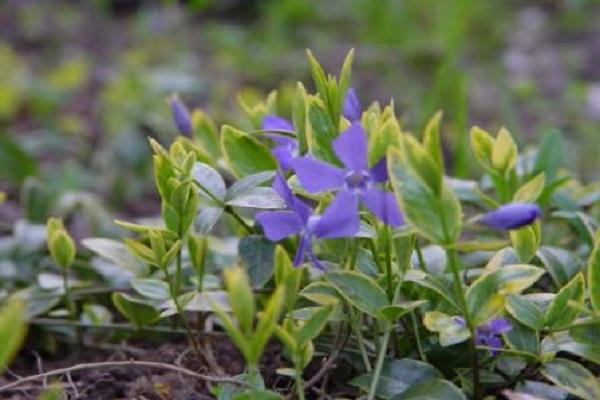
Periwinkle Atropurpureа
Compact dwarf shrub covered with small leaves: their size does not exceed 3 centimeters. The length of the shoots growing horizontally varies from 30 to 80 centimeters. Thanks to the rooting of the stems, it can reproduce independently. The flowers are large, purple-purple. Atropurpurea prefers to grow in shaded or semi-shaded areas with drained soil.
Periwinkle small captivity
The ground cover variety differs from a number of other varieties in its double, lush blue flowers. The leaves are dark green, elongated. Curly shoots grow 30-80 centimeters long in a year and quickly braid the surrounding area. Captivity likes to grow in partial shade or shade and is resistant to low temperatures.
Periwinkle white
Herbaceous evergreen plant with creeping rooting stems. White, large flowers have 5 petals. The flowering period is May-June.
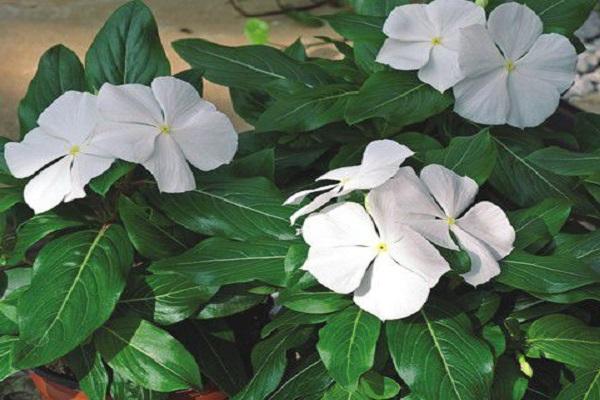
The specifics of growing a flower
Periwinkle is one of those plants that do not require any special care. All a flower needs is some water and fertilizer. Thanks to this feature, both inexperienced gardeners and summer residents who come to the site once a month can successfully grow it.
Seat selection
Depending on the requirements of the species, the shrub is planted in a place protected from northern winds, in a weak or full shade. Since excess moisture provokes the development of fungal diseases, groundwater should not lie close to the surface at the landing site.
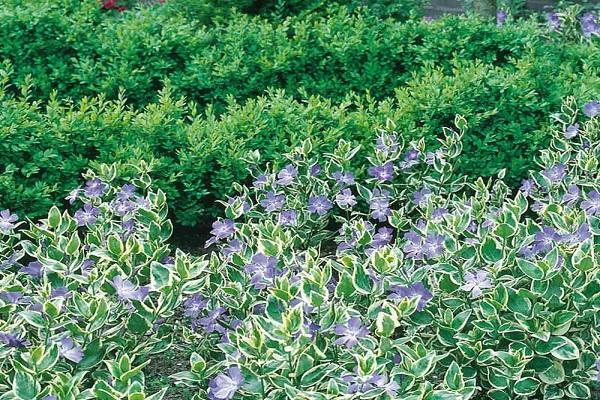
How and when to sow seeds
Periwinkle is one of those plants that can be planted regardless of the season. Sowing material is sown in early spring, before winter or on a rainy summer day. In a box with loose soil, a groove is made and at a depth of 1 centimeter, seeds are laid out in it with a step of 1-2 centimeters. The box is placed in a dark place or covered with a piece of black plastic.
Planting process
The planting of young plants is carried out in separate pits, with a step of 35-40 centimeters. The roots are straightened and sprinkled with nutritious loose soil, slightly crushed. The new flower is watered with a moderate amount of water.
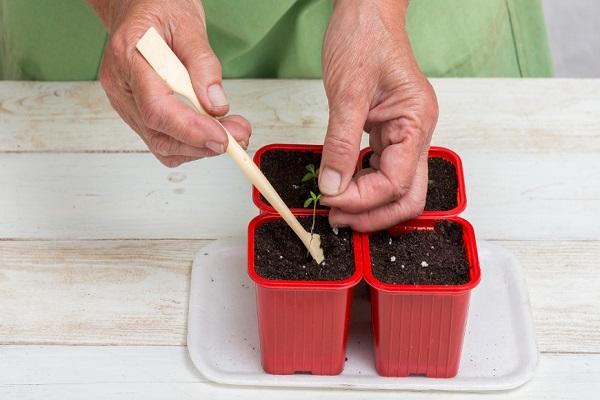
Further care of periwinkle
In order for the flower to be as magnificent as possible, the plant must be provided with conditions favorable for active growth. Such factors influence the condition of the bush.
Lighting
The plant needs a lot of light only at a young age. Adult specimens prefer to grow in partial shade or shade. In the sun, the bushes become liquid.
Temperature
The temperature in the room before the emergence of shoots should be +23 C. As soon as the sprouts appear on the surface, the box is placed on the windowsill, and the temperature is lowered to +20 C. Plants aged 2-3 years are comfortable at a temperature of +20, +24 C.
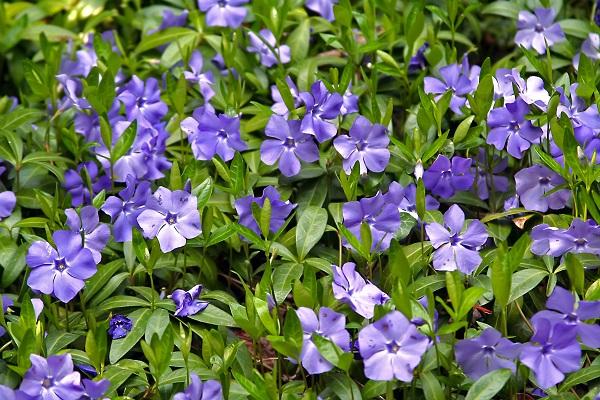
Humidity and watering
Periwinkle is not very picky about moisture, so it grows well even with a minimum amount of watering. In the southern regions, where the sun's rays are especially active, the frequency of watering is slightly increased: the plant will be lush and, accordingly, beautiful.
Does periwinkle need a transplant?
Most experienced gardeners believe that periwinkle can grow beautifully in one place for many years. A transplant is necessary only when the shrub has taken over areas where other cultivated plants grow. In this case, the shrub is carefully dug up and transferred to another place.
Pruning
To activate the tillering process, pinch all the stems of the plant. After the procedure, the bush becomes more compact and lush. After the end of spring flowering, the periwinkle is trimmed, and cuttings are cut from healthy stems. Although autumn is the time for preparatory work, you do not need to prune the evergreen before winter.
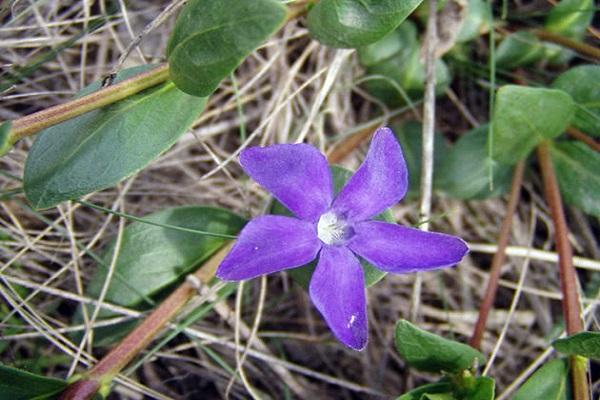
The soil
The soil for planting should be loose, nutritious and drained. Acidic soils must be neutralized before planting. Before planting the plant, the poor soil is fertilized with rotted manure or mullein solution.
Fertilizers
Complex mineral or organic fertilizers are used as a nutrient mixture for feeding a flower. The most effective is the introduction of leaf humus or compost.
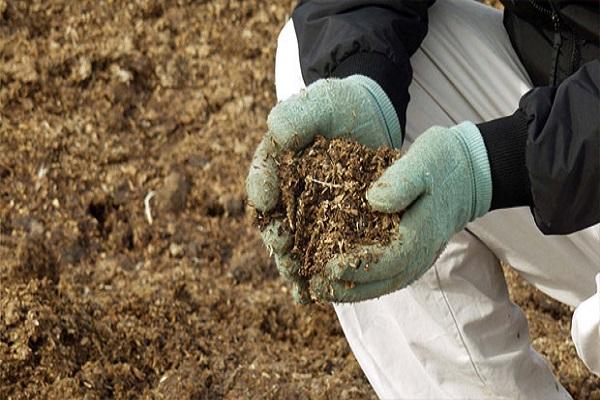
We fight pests and diseases
In conditions of high humidity, periwinkle is affected by powdery mildew and rust. Potent fungicides are used to fight diseases. For the treatment of powdery mildew, the bush is sprayed with Topaz, Skor, Quadris, and Bordeaux mixture, Kuproksat are suitable for rust.
Among insects, the flower attacks only aphids. Processing is carried out by Fufanon, Karbofos.
Breeding methods
Periwinkle propagates by seeds, cuttings and layering. For amateur gardeners, experts recommend using one of the vegetative methods for growing a flower. Growing a flower from a seed is harder and much longer.

A stalk is cut from the middle of healthy, mature shoots. The interval between planting material is 20-30 centimeters. Landing on the site is carried out in the spring or late summer.
Evergreen species are propagated by dividing the bush. To do this, the shoot in one place is firmly pressed to the ground and fixed with a metal hairpin or applied with pebbles. The next year, when normal roots are formed, the branch is cut off. If you use this method, the probability that reproduction will be successful will be almost one hundred percent.
Periwinkle in landscape design
The evergreen flower braids everything around with lush stems in the shortest possible time. The plant is decorated with borders, ridges. Looks beautiful in mixborders and between trees. The green carpet is combined with hyacinths, groves, lungwort, forget-me-not.
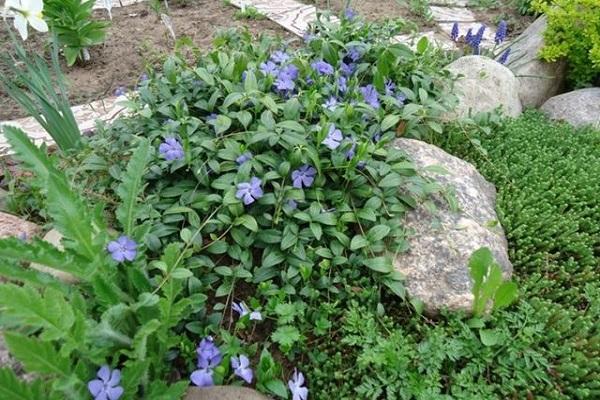
When growing a flower in a small garden, do not forget about correcting the direction and length of the stems. If left unattended, it can quickly braid and overwhelm other small plants.
When to collect and how to store periwinkle seeds?
Seeds are harvested after the end of the flowering period. Depending on the species, seed harvesting is carried out from the end of June to September.Ripe boxes are torn off from the shoots, open and pour the planting material onto a paper sheet.
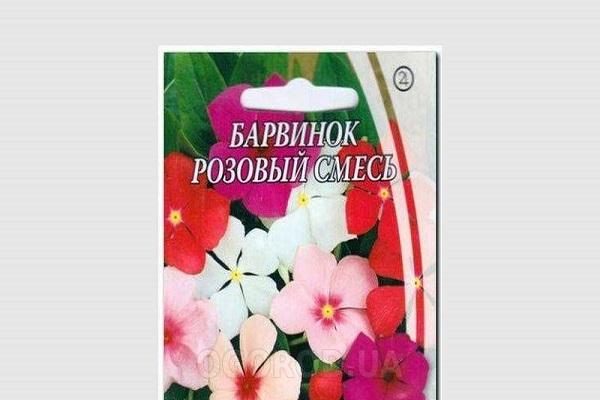
It is recommended to store seeds in an envelope or bag placed in a dry, well-ventilated place. On the eve of sowing, they are disinfected in a weak solution of potassium permanganate. However, since growing by seeds is time-consuming, it should only be done by enthusiasts.
Periwinkle is a colorful flower, absolutely unpretentious to soils and growing conditions. The shrub looks great in any part of the garden: be it between trees, in a mixborder, on a curb or in a flower bed with bulbous flowers. Thanks to its "independence", the plant can be successfully grown by both amateur flower growers and busy summer residents.
